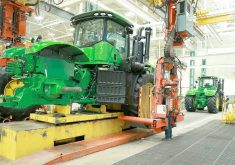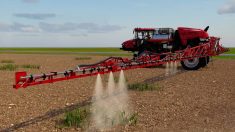The recent federal government announcement that it would be making some changes to the Temporary Foreign Worker Program (TFWP) has caused some anxiety in the intensive agriculture sectors in Alberta. It would seem that whenever a government program is working well and there is an announcement of changes, one senses that they may not help matters and probably make the program worse. When those changes are made to address a political issue and seemingly being done in haste, one wonders who will be caught in the crossfire. I suspect agriculture may end up paying for the sins of others.
Read Also

Guarding against misinformation: Do you believe in house hippos?
Misinformation and disinformation run rampant in today’s digital age. Farmers must be wary of the digital dangers and know how to keep themselves safe.
No one supports a program that encourages abuse that actually displaces Canadian workers. But the answer isn’t to tighten up the process for every sector. To date it looks like the shotgun approach will be taken by program managers. Rather than accepting the tested reality that most Canadians won’t do farm labour, it would seem that operators may have to go to extraordinary lengths to prove the obvious once again.
That’s discouraging for operators who have better things to do with their time. But then foreign workers are nothing new to the ag industry. History does tend to repeat itself in this matter, but perhaps there is a message in that repetition which should be obvious.
First, some historical context. Foreigners, immigrants and specific groups working in ag operations is nothing new and it goes back to the beginnings of farming and ranching in Alberta. What has changed over that time are the players and groups involved, who in many cases progressed from being just farm workers to managers and owners of those operations. In many cases that evolution is the success story of human determination and family dreams. One does wonder if that story will continue under present agricultural economic conditions, which have such high financial hurdles to overcome. But if history is any lesson, where there is a will, there is sure to be a way.
The ranching industry started out being British- or Eastern Canada-owned and run with American cowboys. Within 50 years it was essentially locally owned and operated by Canadians. In another sector, irrigation development in the south brought crops that required considerable “stoop labour” as it was called back then. In the early 1900s Mormon immigrants brought in commercial-scale sugar beet growing and processing. That created a huge demand for seasonal farm labour, much of it provided by the settlers themselves and contract labour from native reserves. That labour source was later supplanted by Hutterite colonies, Depression-era make-work programs, and POWs and Japanese/Canadian detainees during the Second World War. The next group to provide cheap labour was Dutch immigrants in the 1950s. Interestingly a number of those groups now own and produce much of the agricultural production of southern Alberta.
Labour competition
Today much of the old “stoop labour” has been displaced by high-tech machinery. The exception is the greenhouse industry where considerable hand labour is still required. It’s in that industry that the TFWP has had considerable impact. Growers are sensitive to the issue of foreign workers in their operations, but in Alberta it boils down to two realities — wages and continuity. With the most robust economy in the country and very low unemployment, finding workers is a nightmare for intensive ag operations. With wages averaging in the $40-per-hour range for many energy-related jobs, agriculture can’t compete. But the bigger problem always is continuity — the fact is local workers won’t stay long on the job, and in industries that produce perishable food products, that’s a disaster. The solution for so many operations has been the TFWP. It has brought some stability to the greenhouse industry and other intensive operations and processors.
The concern is that any changes to TFWP to address abuse issues may have a perverse effect on production stability, particularly in agriculture. If operators will have to go to additional lengths to hire locally or from distant parts of Canada, it’s a headache they don’t need. They have “been down that road before” and it doesn’t work. Sure there are unemployed folks in Eastern Canada that could do ag labour jobs in Alberta. But history has shown they don’t last long and perpetuate that old saw about “one crew being hired, one crew working and one crew quitting.”
One hopes that wiser heads running TFWP will prevail and agriculture will be separated, and no more undue red tape requirements will be placed on ag operators wanting to use foreign workers. One would hope that program managers would actually make using the program easier for agriculture. Growers have stated that many of their foreign workers are amazingly loyal, dedicated and hard working and all they want is a chance to stay in this country, raise their families and contribute to society and the economy. That would be the same hopes and dreams that the groups preceding them had the opportunity to do. I would suggest that process worked very well for most of those groups in the past, and it will work for these foreign agriculture workers today and in the future.














